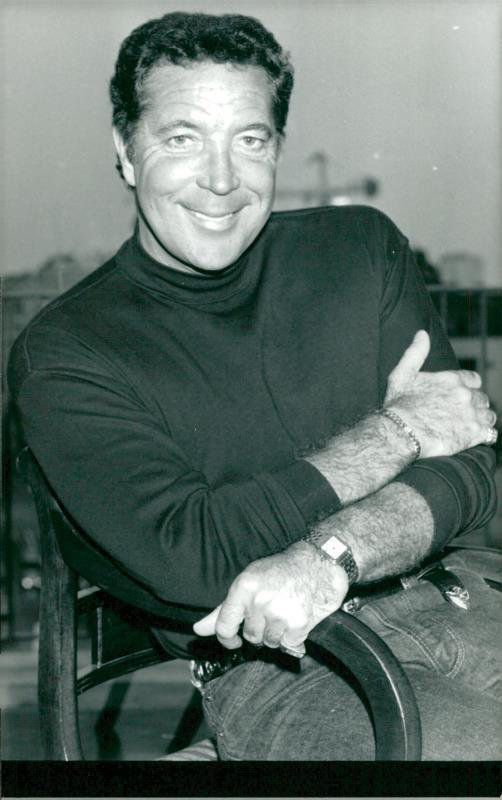Tom Jones, hailed as one of the most iconic vocalists of the 20th century, mesmerized audiences with his unmistakable baritone voice and commanding stage presence. His career, spanning over six decades, includes countless celebrated tracks, yet one song in particular, “You Can Leave Your Hat On,” shines as a fiery and seductive anthem. This song has firmly anchored itself in pop culture, underscoring Jones’ incredible versatility and his remarkable ability to evolve with changing times. Originally penned by Randy Newman, it became a defining piece in Jones’ later career, reintroducing him to a whole new, modern audience.
The Album: A Snapshot of Evolution
Featured on the 1997 album Reload, “You Can Leave Your Hat On” marked a significant shift from Jones’ traditional crooning style that had defined his early career. Rather than sticking to easy-listening pop, Reload was a bold and daring experiment, featuring collaborations with contemporary artists like Stereophonics, Van Morrison, and Robbie Williams. This eclectic mix breathed vibrant new life into Jones’ career by showcasing his ability to reinterpret diverse genres and infuse his unique personality into cover hits.
Among these collaborations and covers, “You Can Leave Your Hat On” stood apart with its unabashed, sultry tone and electrifying arrangement. Randy Newman’s original version, minimalist and blues-focused with piano at its heart, was transformed by Jones into a swaggering, fully realized anthem propelled by powerful instrumentation and his signature bravado.
Instrumentation and Sounds: A Sensory Explosion
The hallmark of “You Can Leave Your Hat On” lies in its masterful arrangement that perfectly balances sensuality with raw energy. The instrumental layers each contribute to the building sultry tension:
- Guitar: Dominating the track, the electric guitar’s sharp and bluesy riffs weave through, adding edgy sensuality and a sense of urgent desire, perfectly complementing Jones’ commanding vocals.
- Piano: Although Jones expanded the instrumental palette, the piano remains essential, delivering rolling chords and dramatic flourishes that root the song in its blues origins and sophistication.
- Brass Section: The thrilling addition of horns amplifies the track’s richness and bombastic feel, punctuating climactic moments and lending a cinematic grandeur to the piece.
- Rhythm Section: Bass and drums lock into an irresistible groove, maintaining a steady, seductive pulse that drives the track forward, preserving its intense tension.
- Vocals: Tom Jones’ powerful voice, both smooth and commanding, exudes confidence and charisma, delivering a performance that transcends mere singing—he inhabits the lyrics, captivating listeners with playfulness and passion.
The production on Reload shines, with a polished finish that heightens appeal without sacrificing the raw energy driving the performance. Each instrument shines individually, yet blends flawlessly to form a dynamic and cohesive soundscape.
The Lyrics: A Celebration of Playfulness and Power
Lyrically, “You Can Leave Your Hat On” boldly celebrates sensuality with playful yet commanding words expressing both intimacy and empowerment. The central metaphor—leaving the hat on—evokes vulnerability mixed with self-assuredness, an emotional interplay Jones expertly captures through his delivery.
The lyrics’ simplicity allows the instrumentation and vocal prowess to captivate the audience fully. Repetitive lines like “You can leave your hat on” serve as a hypnotic mantra, building suspense and drawing listeners deeper into the song’s seductive atmosphere. This combination of straightforward yet subtle lyrics makes the song irresistibly effective.
Cultural Impact and Legacy
This track has garnered enduring popularity, deepened by its memorable use in film and television. Most notably, the 1986 film 9½ Weeks featured the song during a sultry striptease that became a cinematic legend, cementing its status as a quintessential anthem of seduction and flirtation.
Tom Jones’ electrifying version introduced the song to new generations, breathing second life into it and proving the power of artistic reinterpretation. For countless fans, Jones’ rendition is definitive, a staple in his live shows and a timeless classic.
Recommended Listening: Similar Songs for the Perfect Playlist
If captivated by the seductive charm of “You Can Leave Your Hat On,” consider exploring these similarly alluring tracks:
- “Feeling Good” by Michael Bublé – A jazzy, commanding vocal masterpiece perfectly complementing Jones’ sultry anthem.
- “Sexual Healing” by Marvin Gaye – A smooth, soulful seduction sharing the same sensual energy.
- “It’s Not Unusual” by Tom Jones – A peek into Jones’ earlier energetic and versatile style.
- “Mustang Sally” by Wilson Pickett – Bluesy with guitar and brass, echoing the swagger of Jones’ track.
- “Let’s Stay Together” by Al Green – Silky vocals and romantic hues aligning with the anthem’s vibe.
Final Thoughts: A Song That Stands the Test of Time
“You Can Leave Your Hat On” transcends being merely a song; it’s an experience and mood encapsulated magnificently by Tom Jones. His rendition redefines Randy Newman’s original, turning it into a grandiose, captivating performance that remains irresistibly potent decades later. The compelling mix of sensual lyrics, robust instrumentation, and Jones’ magnetic delivery makes it a standout on Reload and a testament to his enduring ability to reinvent himself.
Whether a devoted follower or a first-time listener, this anthem is essential. It perfectly captures the magic of an artist at his peak, blending classic sounds like guitar and piano with modern flair, leaving audiences yearning for more—a true hallmark of timeless music.
